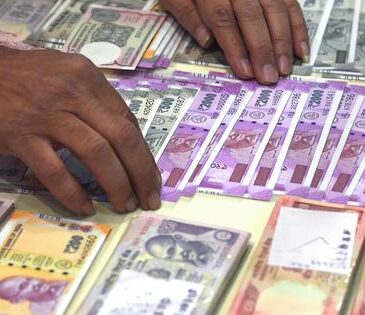
Buoyant risk sentiment amid expectations for a deal that would end US government shutdown. Global equities make solid gains while an initial selloff for US treasuries fades
Risk sentiment was underpinned at the start of the trading week amid expectations for deal that would end the longest ever US government shutdown. The US Senate took a step towards re-opening the government after a group of Democrats crossed party lines to endorse a compromise plan. The Senate will need vote on the deal, which is not currently scheduled, then the House will need to pass the bill, before President Trump signs it into law. The political developments provided a boost to global equities. The Euro Stoxx closed 1.8% higher and the S&P has gained 0.7% in afternoon trading while credit spreads have tightened.
Fed speakers have highlighted the divide within the FOMC about how much more to cut borrowing costs. St Louis Fed President Musalem said he expects the US economy to bounce back strongly next year and that further easing should be approached with caution. Meanwhile Fed Governor Miran thinks it would be appropriate to reduce rates by 50bp in December citing continued weakness in the labour market. Market pricing for December was stable with 16bp of implied easing for the meeting.
US treasury yields moved higher in Asia amid the improved risk sentiment. 10-year yields reached a high of 4.14%, 5bp above the close from Friday, before retracing most of the selloff. The market will focus on supply in coming days in the continued absence of official data. The Treasury will auction new three-, 10-, and 30-year debt and the refunding will total US$125 billion which is the same amount going back to May last year.
Reserve Bank of Australia Deputy Governor Hauser said that the recovery in GDP comes from a point of high-capacity utilisation. This is a hawkish interpretation of the central bank’s forecasts, and doesn’t imply further easing, even if the economy evolves in line with its forecasts. He also noted that financial conditions are closer to neutral than the central bank had thought previously. The comments contributed to higher Australian rates and supported the AUD.
The US dollar index has been fairly stable in response to the political developments and absolute moves across most G10 currencies have been small. The AUD has been the strongest performer since FX markets reopened for the week, and NZD/AUD has traded to fresh twelve-year lows near 0.8630. The yen and the Swiss franc have been relatively weak on fading demand for defensive positioning as risk sentiment recovered. NZD/USD advanced towards 0.5650 overnight before paring its gains and is little changed on the major cross rates.
NZ swap rates ended the local session yesterday 1-3 bp higher across the curve with a steepening bias. There were limited domestic catalysts and higher offshore yields provided the directional bias after the hawkish tone from the RBA Deputy Governor and amid hopes of an end to the US government shutdown. The NZ 2y/10y curve revisited the recent +113bp high. 10-year government bonds closed 2bp higher at 4.10% and continued to outperform against Australia with the spread narrowing to -30bp.
Australian 10-year bond futures are ~3bp lower in yield terms since the NZ close yesterday and combined with the rebound in treasuries suggest a lower bias for NZ yields on the open.
Inflation expectations within the RBNZ Survey of Expectations will be monitored today. 2-year ahead readings were well behaved at 2.28% in Q3. UK labour market data will be in focus after the Bank of England voted 5-4 to keep interest rates on hold at 4% last week. The market is pricing close to a 70% chance of a 25bp cut at the next meeting in December.
Select chart tabs
Stuart Ritson is a senior Markets Strategist at BNZ Markets.




